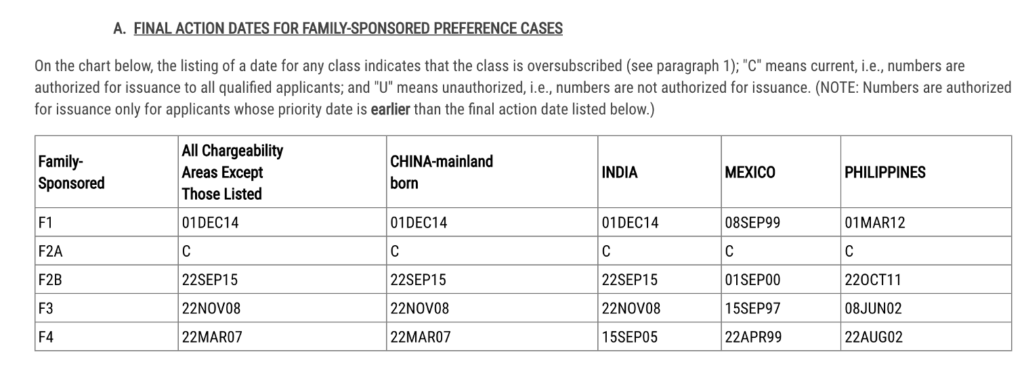How to Read a Visa Bulletin
By Sharaque Khan
Every year, thousands of people wish to immigrate to the U.S. However, the Department of State places a yearly cap on specific categories of green cards. As a result, the number of people seeking green cards under these categories is greater than that available. This backlog can sometimes last up to several years.
To better understand the family immigration process, let’s examine two significant steps in the filing process. The first step is filing the I-130 application; the second step is adjusting status with the USCIS if you are within the U.S. or consular processing with an embassy or a consulate if you are abroad.
Sometimes you can take both these steps simultaneously. However, after taking the first step for specific categories, you will have to wait for your turn before taking the second step. The dates on the visa bulletin tell you when you can take this second step.
Priority Date
The visa bulletin goes by the date you filed your I-130 petition. This date is called the priority date. The priority date acts as your place in line to take the second step in the green card process. If your priority date is current on the visa bulletin, you may take this next step. However, if it is not, you will have to wait until it becomes current. As stated earlier, an example of this next step involves filing the I-485 Form for Adjustment of status or the DS-260 Form for consular processing.
How to read the visa bulletin
Now let’s examine the Jan 2022 Visa Bulletin as an example. First, we look at the chart labeled “A. Final Action Dates” to compare our priority date against the date indicated in the section. These dates are dependent on your preference category and your country of origin. There are two major categories on the page, (1) the Family-based category and (2) the Employment category. The details of these categories are listed above the chart.
For example, a green card holder born in India petitioning for his unmarried son will look under India in the F-2A category. This category shows a C under India. The C means that the priority date for this category is current and, you can now apply for Adjustment of Status or Consular Processing for your original I-130 application. However, if you have not yet filed an I-130 application, you would be able to file both the I-130 application and the adjustment of status application simultaneously because your priority date is current.

Second, let’s examine the F3 category in the same chart. If you are born in a country other than China, Mexico, India, or the Philippines, you will look under the “All Chargeability” area in the first column. The date in this column for the F-3 category is 22 Nov 08, which means that if you filed your I-130 application before this date, your priority date is current. You will now be able to proceed with your Adjustment of Status application or consular processing filing.
There are two charts for family-sponsored visa applications on this website: (1) The Final Action Dates (2) The Date for Filing. Each month USCIS will indicate on its website the chart you should follow.
Now you know how to read a visa bulletin. If you have questions, you can contact me at sharaque@southasianattorney.com or visit my website and schedule a consultation at southasianattorney.com.
